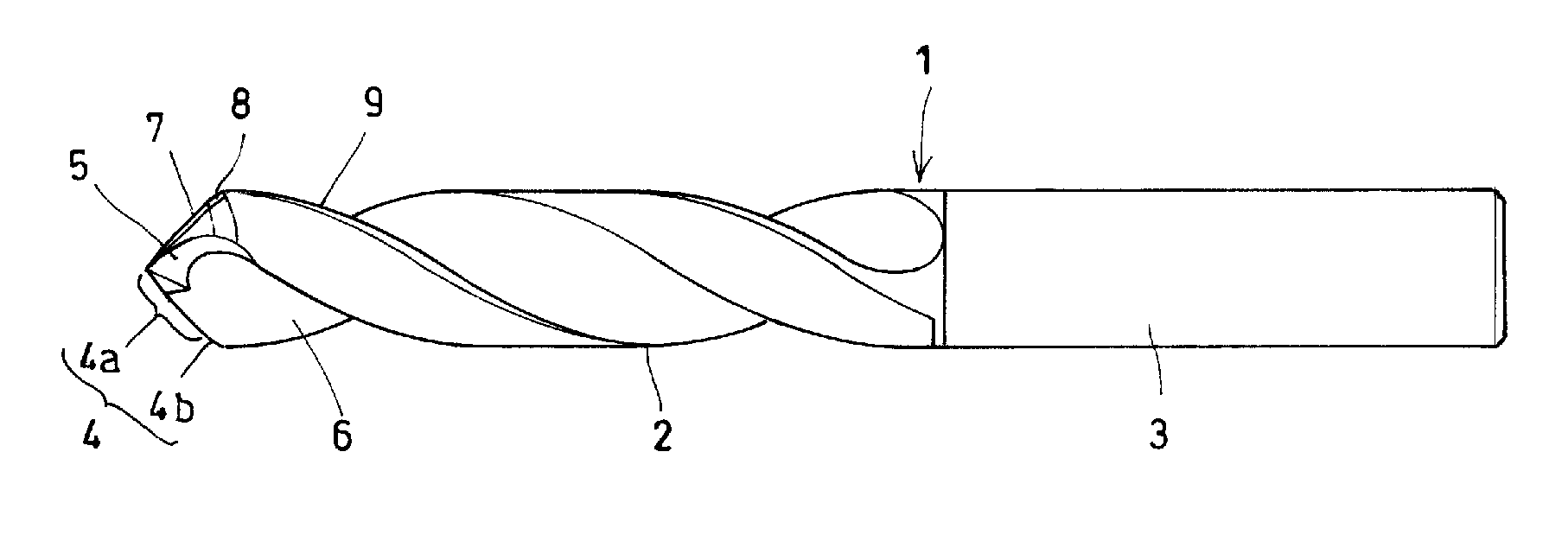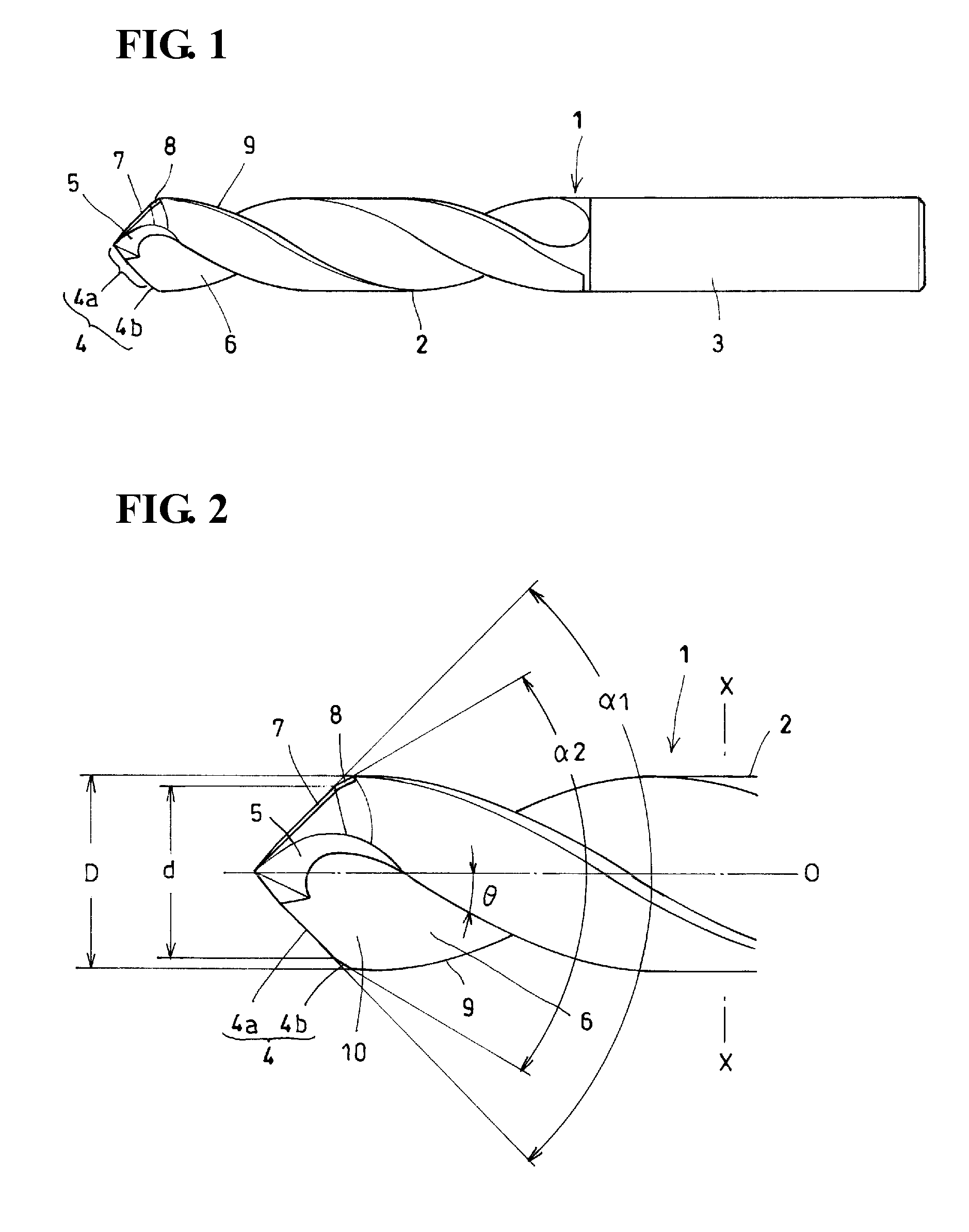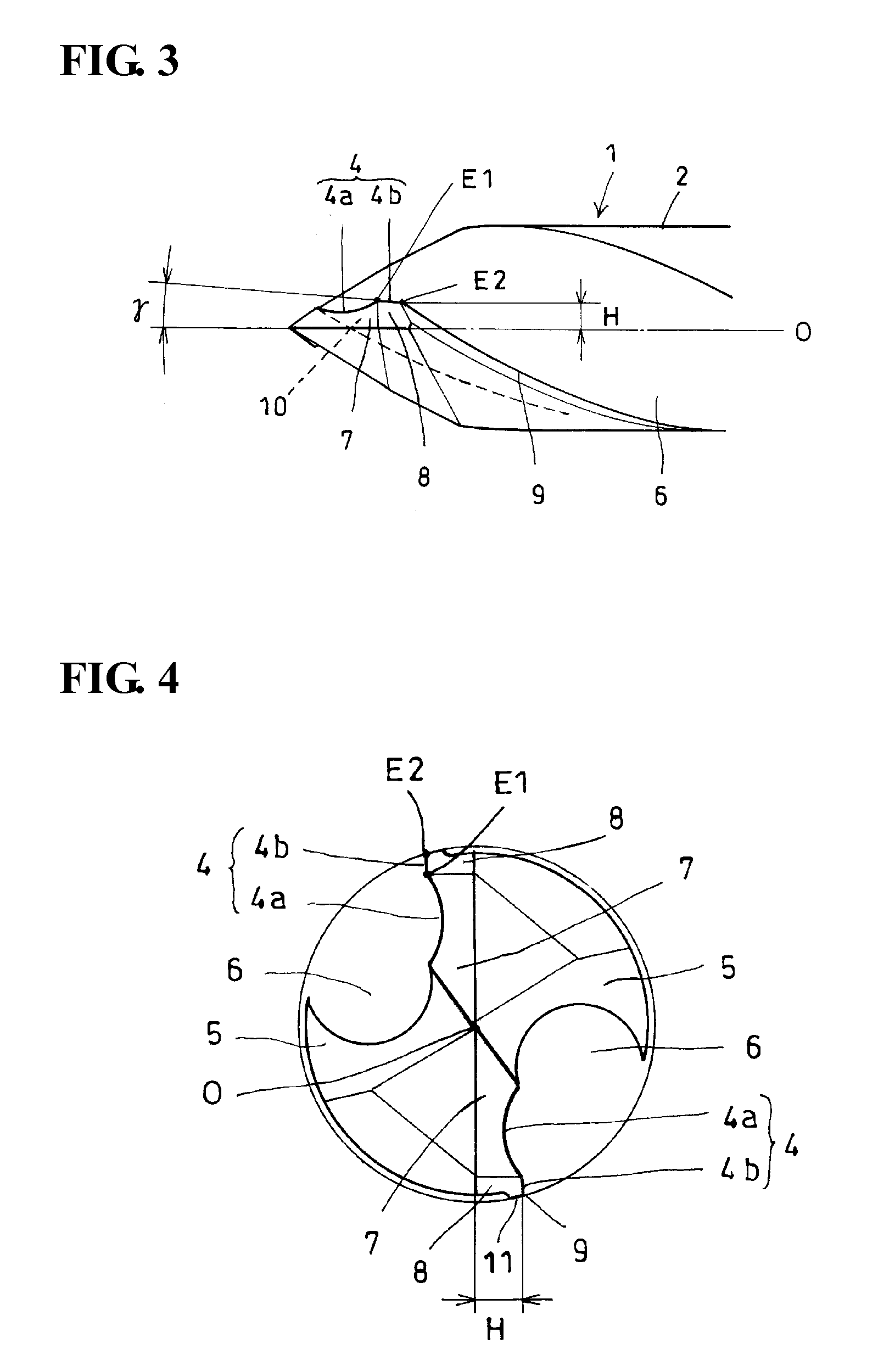Twist drill
a twisting drill and drill bit technology, applied in the direction of twisting drills, manufacturing tools, wood boring tools, etc., can solve the problems of long time required for drilling through holes and called chatter, and achieve the effects of small force generated during drilling so as to lift the workpiece, good cutting ability, and high quality drilling
- Summary
- Abstract
- Description
- Claims
- Application Information
AI Technical Summary
Benefits of technology
Problems solved by technology
Method used
Image
Examples
example 1
[0037]The influence of the skew angle γ of the secondary cutting edge with respect to the rotation axis on the drilling quality of the double-angle drill was examined. The specifications of the drill used in this test were as follows: the drill diameter D=φ10 mm, the point angle of primary cutting edge was 120°, the point angle of secondary cutting edge was 60°, the diameter of outer end portion of primary cutting edge d=0.9D, and the skew angle γ of the secondary cutting edge was varied as illustrated in Table I.
[0038]A CFRP plate having a thickness of 3 mm was used as a workpiece. The cutting conditions were such that the cutting speed Vc=100 m / min and the feed f=0.05 mm / rev. Table I lists the result of the experiment.
[0039]In the row for chatter in Table I, “+” represents “chatter did not occur”, “±” represents “slight chatter occurred”, and “−” represents “chatter occurred”. In the row for fuzzing, “+” represents “fuzzing did not occur and the quality of the inner surface of a d...
example 2
[0041]Next, the influence of a difference in the point angle α2 of the secondary cutting edge of the double-angle drill on the quality of drilling and the tip wear was examined. The specifications of the drill used in this test were as follows: the drill diameter D=φ6 mm, the point angle of primary cutting edge α1=140°, and the diameter of the drill at the outer end of primary cutting edge d=0.83D.
[0042]A CFRP plate having a thickness of 10 mm was used as a workpiece. The cutting conditions were such that the cutting speed Vc=100 m / min and the feed f=0.05 mm / rev. Table II lists the result of the experiment.
[0043]In the row for fuzzing in Table II, “+” represents “fuzzing did not occur and the quality of the inner surface of a drilled hole was excellent” and “−” represents “fuzzing occurred and the quality of the inner surface of a drilled hole was poor”. The tip wear was evaluated after drilling 500 holes. The tip wear amount in the cells of evaluation represents the maximum flank f...
PUM
| Property | Measurement | Unit |
|---|---|---|
| skew angle | aaaaa | aaaaa |
| skew angle | aaaaa | aaaaa |
| helix angle | aaaaa | aaaaa |
Abstract
Description
Claims
Application Information
 Login to View More
Login to View More - R&D
- Intellectual Property
- Life Sciences
- Materials
- Tech Scout
- Unparalleled Data Quality
- Higher Quality Content
- 60% Fewer Hallucinations
Browse by: Latest US Patents, China's latest patents, Technical Efficacy Thesaurus, Application Domain, Technology Topic, Popular Technical Reports.
© 2025 PatSnap. All rights reserved.Legal|Privacy policy|Modern Slavery Act Transparency Statement|Sitemap|About US| Contact US: help@patsnap.com



